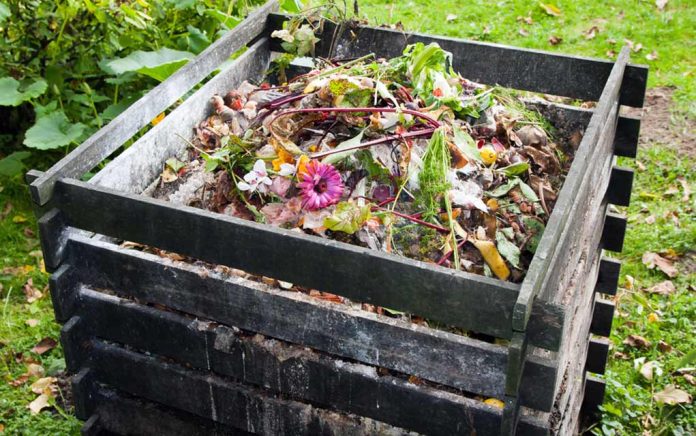(SurvivalDaily.com) – A compost pile can be a great way to help you fertilize and enrich your garden. As long as you put the right items into your compost pile, the odor should remain barely noticeable. Here’s how you can build your own compost pile and save money.
Starting Your Pile
Before you start your own compost pile, be sure to check with any state, county and local ordinances to make sure there are no restrictions on open-air composting.
To start your compost pile, you first need to figure out where to put it. Some people elect to use compost barrels or boxes, while others simply make a pile. Whatever your method of choice is, the matter will decompose, some types slower than others.
If you have the space for three piles, you might be able to keep your compost more organized. One pile can be for the new scraps, another for “in process” composting and the last one is for the finished product.
For people who can only spare enough space for one pile, don’t fret as this is completely fine. However, you will have to stop adding in new material to let the decomposition finish.
What to Put in a Compost Pile
There is a misconception among some people that simply because something is organic in nature it’s okay to put in your compost pile. They couldn’t be any more wrong. One item you don’t want to put into your pile is meat of any kind, which will cause it to smell badly.
You can put dead leaves, lawn clippings, fruit and vegetable scraps, newspaper, cardboard and manure in your compost pile. These items break down into two categories: browns and greens.
Browns, or dry ingredients, consist of dead leaves, newspaper, cardboard and other items of that nature. Greens, also known as wet ingredients, are fresh manure, lawn clippings and food scraps — again, no meat should go into your compost.
Combining Composts
Combining the browns and greens will help the pile break down faster as each has a specific makeup. Browns are full of carbon, while greens have high nitrogen content. Both are necessary in a compost pile.
Ideally, you should combine 2 parts of browns with 1 part of greens. However, this ratio can be varied and doesn’t have to be precise. Remember that a pile made entirely up of leaves will take much longer to break down, and a pile made up of only food scraps will turn into a nasty wet mess long before it will ever become usable compost.
Every new pile stinks in the beginning, but as time goes on and the process continues, the smell fades into an earthy aroma that many people find appealing.
Once you get started and follow the proper steps in building a compost pile, it will be fully finished when the materials that went into the pile are no longer recognizable. Another option you have to help the decomposition process is to aerate the pile.
By turning the pile, you’re allowing oxygen and moisture to reach every part of it, helping the process to speed up. Pile aeration is completely an option and not necessary for a compost pile; you can do it once a week, less often or simply not at all, and the pile will still decompose.
A compost pile for your garden isn’t the only place where you can compost. Check out compost toilets and learn how you can go off-grid with your toilet.
~Copyright 2021, SurvivalDaily.com

















